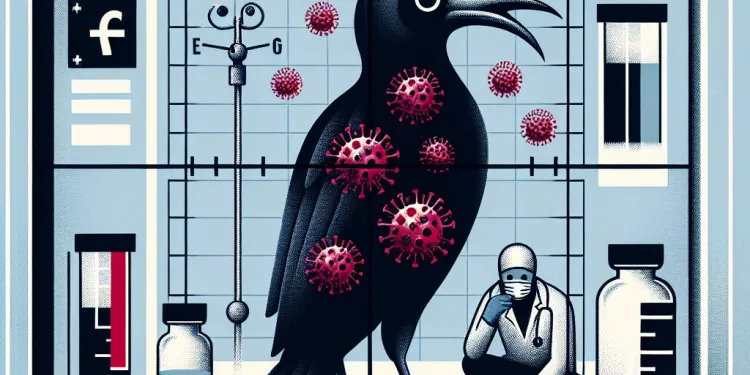
Find Help
More Items From Ergsy search
-

How does the bacteria Yersinia pestis survive between outbreaks?
Relevance: 100%
-

Can the bubonic plague become resistant to antibiotics?
Relevance: 53%
-

What advancements have been made in understanding the bubonic plague?
Relevance: 40%
-

How is the bubonic plague transmitted?
Relevance: 39%
-

What is Bubonic Plague?
Relevance: 37%
-

What historical event is the bubonic plague known for?
Relevance: 29%
-

Did the bubonic plague affect only Europe?
Relevance: 28%
-

Are there modern outbreaks of bubonic plague?
Relevance: 28%
-

What is the survival rate for bowel cancer?
Relevance: 28%
-

What is the survival rate for testicular cancer?
Relevance: 28%
-

What is the bubonic plague?
Relevance: 27%
-

Is the bubonic plague contagious between humans?
Relevance: 27%
-

Where do Chikungunya outbreaks typically occur?
Relevance: 26%
-

Can nits survive on furniture or clothing?
Relevance: 25%
-

Are measles outbreaks common in the UK?
Relevance: 25%
-

What is a bubo?
Relevance: 25%
-

Can the bubonic plague be prevented?
Relevance: 24%
-

Where did the bubonic plague originate?
Relevance: 24%
-

What triggers a cold sore outbreak?
Relevance: 23%
-

What is the mortality rate of untreated bubonic plague?
Relevance: 23%
-

Can Nipah Virus cause outbreaks?
Relevance: 23%
-

What are the symptoms of the bubonic plague?
Relevance: 23%
-

Why are measles outbreaks still occurring?
Relevance: 23%
-

How is Nipah Virus controlled during outbreaks?
Relevance: 22%
-

What foods are commonly associated with E. coli outbreaks?
Relevance: 22%
-

What regions are most at risk for Nipah Virus outbreaks?
Relevance: 21%
-

Has Marburg virus caused any major outbreaks?
Relevance: 21%
-

Are there any countries at higher risk for Marburg virus outbreaks?
Relevance: 21%
-

Kirsty | Surviving Suicidal Thoughts
Relevance: 21%
-

What public health measures are important for managing the plague?
Relevance: 21%
-

How do health authorities confirm a Marburg virus outbreak?
Relevance: 21%
-

What measures are taken during a screw worm outbreak?
Relevance: 21%
-

What should you do during a measles outbreak?
Relevance: 21%
-

Linda | Surviving Suicidal Thoughts
Relevance: 21%
-

How can the bubonic plague be treated?
Relevance: 21%
-

What measures are being taken to control Marburg virus outbreaks?
Relevance: 21%
-

Why are Nipah Virus outbreaks considered a public health concern?
Relevance: 20%
-

What animals are natural carriers of the bubonic plague?
Relevance: 19%
-

Are there vaccines for the bubonic plague?
Relevance: 17%
-

Are there any Zika virus outbreaks currently?
Relevance: 17%
Introduction
Yersinia pestis is the bacterium responsible for the plague, a disease known for causing significant outbreaks throughout history such as the Black Death. Understanding how Yersinia pestis survives between these outbreaks is crucial in managing and preventing future occurrences of the disease. This bacterium has developed several mechanisms to endure and persist in various environments, even when not actively causing epidemics.
Natural Reservoirs
Yersinia pestis primarily survives between outbreaks by residing in natural reservoirs. These reservoirs are mainly small mammal populations, such as rodents, where the bacterium can persist without causing immediate widespread disease. Some of the common rodent hosts include mice, rats, and voles. These animals provide an environment where the bacterium can thrive and multiply, ensuring its survival and continued existence.
Role of Fleas
The transmission of Yersinia pestis between rodents and to other animals, including humans, is primarily facilitated by fleas. Fleas act as vectors that transmit the bacterium through their bites. When a flea bites an infected animal, it ingests the bacteria, which then multiply in the flea's midgut. Subsequently, the bacteria are regurgitated into a new host when the flea feeds again, thus perpetuating the cycle of infection. This flea-borne transmission plays a critical role in the bacterium's lifecycle.
Environmental Persistence
Beyond its ability to persist in animal hosts, Yersinia pestis can also survive outside of a host in certain environments. It is relatively resilient and can persist in soil for extended periods under certain conditions. The bacterium’s ability to endure in the environment may contribute to its re-emergence when animals or humans come into contact with contaminated areas. This environmental persistence further enhances its survivability between outbreaks.
Genetic Adaptations
Yersinia pestis has evolved various genetic adaptations that enable it to survive and thrive in different conditions. These adaptations may include genetic mutations that increase its virulence or resistance to environmental stressors. By undergoing genetic changes, the bacterium can better evade the host's immune response and increase its chances of long-term survival. Such adaptations are crucial for maintaining its presence across various environments and hosts.
Public Health Implications
Understanding the survival mechanisms of Yersinia pestis is vital for public health initiatives aiming to control and prevent plague outbreaks. Monitoring rodent populations and controlling flea infestations are crucial strategies in interrupting the transmission cycle. Furthermore, studying the environmental factors and genetic traits that contribute to the bacterium's persistence can aid in developing more effective surveillance and response plans.
Conclusion
The survival of Yersinia pestis between outbreaks involves a complex interplay of ecological, biological, and environmental factors. By residing in natural reservoirs, utilizing fleas as vectors, and adapting to environmental conditions, the bacterium maintains its presence and potential to cause future outbreaks. Continued research and public health efforts are essential in managing its impact and preventing new epidemics.
Introduction
Yersinia pestis is a germ that causes the plague, a very bad sickness. A long time ago, it caused big sickness outbreaks, like the Black Death. It is important to know how this germ stays alive when there isn't an outbreak. This can help us stop more people from getting sick in the future. Yersinia pestis has smart ways to live in different places, even when it’s not making lots of people sick.
Natural Reservoirs
Yersinia pestis lives in nature to stay alive when it's not making people sick. It mainly hides in small animals like mice, rats, and voles. These animals carry the germ without getting sick right away. The germ can grow and stay alive inside these animals, waiting for a chance to spread.
Role of Fleas
Fleas help the spread of Yersinia pestis between animals and to people. Fleas are tiny bugs that bite animals and people. When a flea bites an animal with the germ, it picks up the germ. The germ lives inside the flea. Then, when the flea bites another animal or a person, it can give them the germ. This helps the germ spread and cause more sickness.
Environmental Persistence
Yersinia pestis can also live in the environment, like in soil, without an animal. It can stay there for a long time if the conditions are right. This means the germ can be waiting to make animals or people sick if they go near it.
Genetic Adaptations
Yersinia pestis can change to survive better. It can develop new traits that help it live in tough places or hide from the body’s defenses. These changes help the germ stay alive for a long time and spread to different hosts.
Public Health Implications
Knowing how Yersinia pestis survives is very important to stop outbreaks. Watching animal populations and controlling fleas is key to stopping the germ from spreading. Learning more about how the environment and genetic changes help the germ stay alive can help us make better plans to catch and stop outbreaks early.
Conclusion
Yersinia pestis stays alive through a mix of living in animals, using fleas, and changing to fit different environments. This keeps the germ ready to cause sickness outbreaks again. We need to keep researching and planning to stop new outbreaks and protect people.
Frequently Asked Questions
Useful Links
- Ergsy carfully checks the information in the videos we provide here.
- Videos shown by Youtube after a video has completed, have NOT been reviewed by ERGSY.
- To view, click the arrow in centre of video.
- Most of the videos you find here will have subtitles and/or closed captions available.
- You may need to turn these on, and choose your preferred language.
- Go to the video you'd like to watch.
- If closed captions (CC) are available, settings will be visible on the bottom right of the video player.
- To turn on Captions, click settings .
- To turn off Captions, click settings again.
More Items From Ergsy search
-

How does the bacteria Yersinia pestis survive between outbreaks?
Relevance: 100%
-

Can the bubonic plague become resistant to antibiotics?
Relevance: 53%
-

What advancements have been made in understanding the bubonic plague?
Relevance: 40%
-

How is the bubonic plague transmitted?
Relevance: 39%
-

What is Bubonic Plague?
Relevance: 37%
-

What historical event is the bubonic plague known for?
Relevance: 29%
-

Did the bubonic plague affect only Europe?
Relevance: 28%
-

Are there modern outbreaks of bubonic plague?
Relevance: 28%
-

What is the survival rate for bowel cancer?
Relevance: 28%
-

What is the survival rate for testicular cancer?
Relevance: 28%
-

What is the bubonic plague?
Relevance: 27%
-

Is the bubonic plague contagious between humans?
Relevance: 27%
-

Where do Chikungunya outbreaks typically occur?
Relevance: 26%
-

Can nits survive on furniture or clothing?
Relevance: 25%
-

Are measles outbreaks common in the UK?
Relevance: 25%
-

What is a bubo?
Relevance: 25%
-

Can the bubonic plague be prevented?
Relevance: 24%
-

Where did the bubonic plague originate?
Relevance: 24%
-

What triggers a cold sore outbreak?
Relevance: 23%
-

What is the mortality rate of untreated bubonic plague?
Relevance: 23%
-

Can Nipah Virus cause outbreaks?
Relevance: 23%
-

What are the symptoms of the bubonic plague?
Relevance: 23%
-

Why are measles outbreaks still occurring?
Relevance: 23%
-

How is Nipah Virus controlled during outbreaks?
Relevance: 22%
-

What foods are commonly associated with E. coli outbreaks?
Relevance: 22%
-

What regions are most at risk for Nipah Virus outbreaks?
Relevance: 21%
-

Has Marburg virus caused any major outbreaks?
Relevance: 21%
-

Are there any countries at higher risk for Marburg virus outbreaks?
Relevance: 21%
-

Kirsty | Surviving Suicidal Thoughts
Relevance: 21%
-

What public health measures are important for managing the plague?
Relevance: 21%
-

How do health authorities confirm a Marburg virus outbreak?
Relevance: 21%
-

What measures are taken during a screw worm outbreak?
Relevance: 21%
-

What should you do during a measles outbreak?
Relevance: 21%
-

Linda | Surviving Suicidal Thoughts
Relevance: 21%
-

How can the bubonic plague be treated?
Relevance: 21%
-

What measures are being taken to control Marburg virus outbreaks?
Relevance: 21%
-

Why are Nipah Virus outbreaks considered a public health concern?
Relevance: 20%
-

What animals are natural carriers of the bubonic plague?
Relevance: 19%
-

Are there vaccines for the bubonic plague?
Relevance: 17%
-

Are there any Zika virus outbreaks currently?
Relevance: 17%


